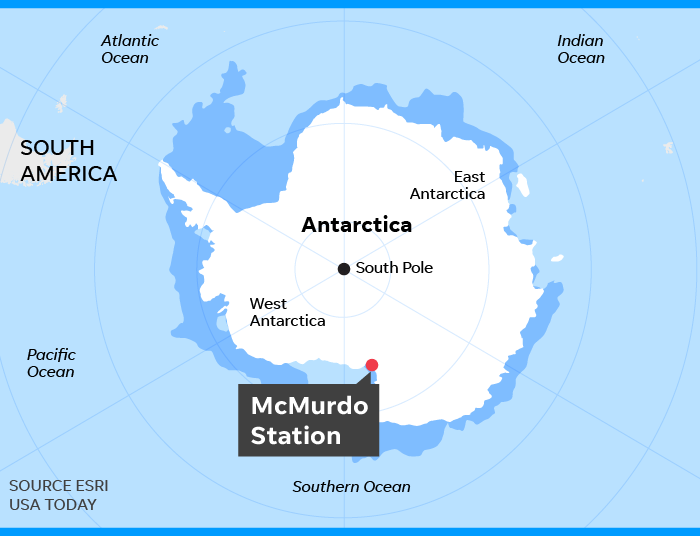I live in Antarctica. You'll need to 'psychologically' accept the fact that it's cold here to survive
 Marina Pitofsky
Marina PitofskyIn Mount Carroll, Illinois, temperatures reached 38 degrees below zero Thursday morning. In Cotton, Minnesota, temperatures were as low as 56 degrees below zero. The 2019 Polar Vortex has brought extreme cold across the Midwest and South this week, with up to 11 dead from the frigid temperatures.
So how do you stay warm in brutal cold? Jonathan Foster, a fuel operator at McMurdo Station in Antarctica, where wind chills can reach 40 degrees below zero, shared some of his top tips with USA TODAY for staying safe.
Lots and lots of layers
Foster says layers are key to staying warm in winter weather. He recommended wearing a thermal base layer to draw moisture away from your body. If you expose sweat to cold temperatures, it can make you even colder.
"Insulation layers close to your core are incredibly important because that helps you retain heat," Foster said. "Over top of that, especially on cold wind chill days, you want to have some kind of layer that helps stop the wind. If you don't have that, you can basically feel the wind blowing right through you.
Foster said you also want to wear mittens instead of gloves, as they trap body heat and don't separate your fingers. You also want to ensure your socks do not restrict blood flow to and from your feet, which can make you feel colder.

Accept the weather
Your mindset also plays a role in handling the cold, according to Foster.
"You kind of have to accept it. That’s something I learned early on," Foster said. "When it’s really cold, you have to psychologically accept the fact that it’s going to be cold. It’s not going to be 75 degrees and sunny today."
Instead of thinking warm thoughts, Foster said you should plan ahead to make sure you have proper protection when going outside.
“When temperatures get really extreme, it can be dangerous," Foster said. "That’s why it’s important to be thinking ahead and planning ahead and preparing and not taking risks that you don’t need to take."

Know your limits
Understanding when it's too cold for your body is another lesson Foster has learned while living in Antarctica.
"One of the biggest challenges is being able to know your limits and accept your limits," Foster said. "A lot of people think that, 'Well, I’m just going to the store,' and so maybe they won’t give their car adequate time to warm up or maybe they won’t wear enough layers."
In some of the lowest temperatures he saw reported across the country, Foster said frostbite could set in on your fingers, toes and ears within ten minutes.
"You have to accept the fact that it is too cold and you need to go inside for a bit to warm up. It’s totally worth it," Foster said. "It’s not worth getting severe frostbite over something just because you wouldn’t accept the fact that you’re only a human being."
Watch out for each other
Foster said you should also make sure members of your family or community are safe in extreme temperatures.
"You have to watch out for yourself, but at the same time we’re all part of a community," Foster said. "It’s important to watch out for the people around you."
If there are warming stations for people struggling with homelessness in your area, you can find them online or through lo coverage.